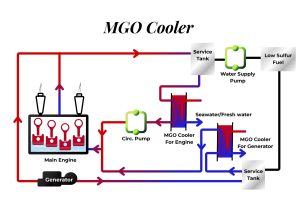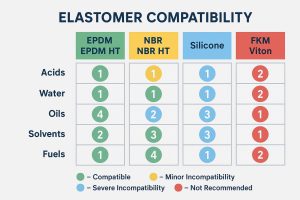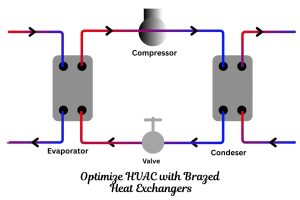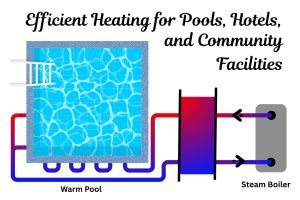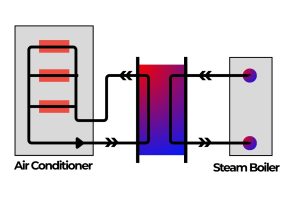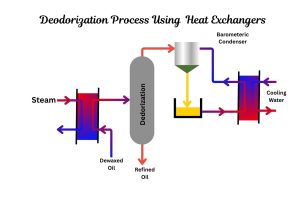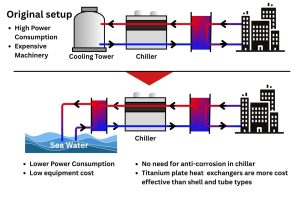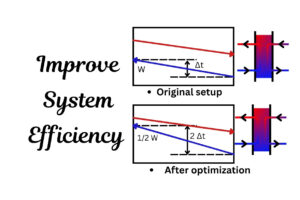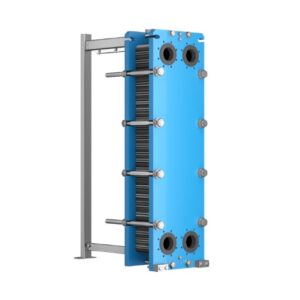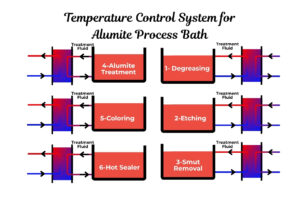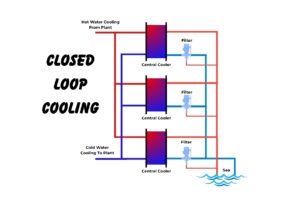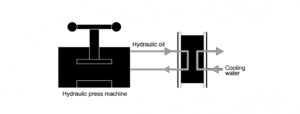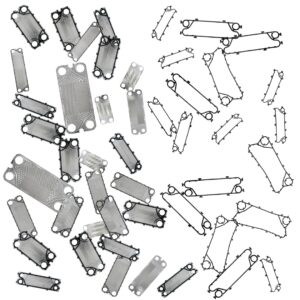Optimizing Heat Sink Performance with CuO-H₂O Nanofluids: A Study on Fin-Spacing and Cooling Efficiency
Introduction: Why is Efficient Cooling Crucial for Modern Microprocessors?
Technological advancements have led to the development of smaller, more powerful microprocessors, resulting in significantly higher heat generation. Efficient heat removal is essential to prevent thermal damage and ensure optimal performance. Traditional air-cooled heat sinks are no longer sufficient for modern high-performance processors, leading to the rise of liquid-cooled heat sinks as a more effective solution.
This study explores the optimization of heat sink performance by varying fin spacing and using CuO-H₂O-based nanofluids as coolants. The goal is to achieve the lowest thermal resistance, base temperature, and highest heat transfer rates, ensuring efficient thermal management for high-heat-generating microprocessors.
How Does Fin-Spacing Affect Heat Sink Performance?
The Role of Fin-Spacing in Heat Transfer
Heat sinks can be optimized by altering their geometry, particularly the fin spacing, to enhance heat transfer. Fin spacing directly impacts the convective and conductive heat transfer areas, influencing the overall cooling efficiency. In this study, heat sinks with fin spacings of 0.2 mm, 1.5 mm, and 2.0 mm were tested to evaluate their thermal performance.
The experiments revealed that reducing fin spacing significantly improves heat transfer. The heat sink with 0.2 mm fin spacing achieved the lowest base temperature of 45.4°C when using nanofluids as the coolant, compared to 46.6°C with distilled water. This demonstrates that narrower fin spacing enhances the heat sink’s ability to dissipate heat effectively.
What Are Nanofluids, and How Do They Enhance Cooling?
The Impact of CuO-H₂O Nanofluids on Thermal Performance
Nanofluids, which consist of nanoparticles suspended in a base fluid, have shown promise in improving the thermal properties of coolants. In this study, a 1% volumetric concentration of CuO-H₂O nanofluid was used to enhance the heat transfer capabilities of the cooling system.
The results showed that nanofluids significantly improved the heat sink’s performance. At a flow rate of 1.104078 LPM, the base temperature dropped by 5.45% when using nanofluids compared to distilled water. Additionally, the heat transfer rate increased by 4.72%, with the nanofluid-cooled heat sink rejecting 94% of the provided heat.
How Was the Experimental Setup Designed?
Simulating Microprocessor Heat Generation
To simulate the heat generated by a microprocessor, a copper block heated by a 285 W mica-insulated clamp heater was used. This setup allowed for precise control over the heat input, ensuring consistent experimental conditions. The heat sink was attached to the copper block, and thermal paste was applied to ensure even contact.
The test rig included a heat sink, a radiator, a reservoir-pump combo, a flow meter, and a needle valve to control the volumetric flow rate. Temperature probes were used to measure the inlet, outlet, and base temperatures, providing data for evaluating the heat sink’s performance.
What Were the Key Findings of the Study?
Base Temperature and Heat Rejection
The base temperature is a critical parameter for evaluating heat sink performance, as it directly correlates with the processor’s temperature. The study found that the heat sink with 0.2 mm fin spacing and nanofluid as the coolant achieved the lowest base temperature of 45.4°C. This is well within the safe operating range for microprocessors, highlighting the effectiveness of the optimized cooling system.
The heat rejection rate also varied with fin spacing and coolant type. The highest heat transfer rate of 268.76 W was achieved by the 0.2 mm fin-spaced heat sink using nanofluids at a flow rate of 0.946353 LPM. This represents a 4.72% improvement over the heat transfer rate achieved with distilled water.
Thermal Resistance and Overall Heat Transfer Coefficient
Thermal resistance is a measure of how effectively a heat sink can transfer heat. The study found that reducing fin spacing and using nanofluids significantly lowered thermal resistance. The lowest thermal resistance of 0.0498°C/W was achieved by the 0.2 mm fin-spaced heat sink with nanofluids, compared to 0.0609°C/W with distilled water.
The overall heat transfer coefficient (U) also increased with reduced fin spacing and the use of nanofluids. The 0.2 mm fin-spaced heat sink achieved a U value of 3148.8 J/m²°C with nanofluids, nearly four times higher than the value achieved by the 2.0 mm fin-spaced heat sink with water.
Conclusion: What Are the Implications for Heat Sink Design?
The study demonstrates that optimizing fin spacing and using nanofluids can significantly enhance the performance of heat sinks. The combination of 0.2 mm fin spacing and CuO-H₂O nanofluids resulted in the lowest base temperature, highest heat transfer rate, and lowest thermal resistance, making it an ideal solution for cooling high-heat-generating microprocessors.
While nanofluids show great promise, further research is needed to improve their stability and make them commercially viable for CPU cooling applications.
About Heating Formula
At Heating Formula, we specialize in providing high-quality materials for plate heat exchangers, ensuring efficient thermal management for a wide range of applications. Our products are designed to meet the demands of modern cooling systems, offering superior performance and reliability.
References
- Wang XD, An B, Xu JL. Optimal geometric structure for nanofluid-cooled microchannel heat sink under various constraint conditions. Energy Convers Manag. 2013;65:528–538.
- Gao JW, Zheng RT, Ohtani H, et al. Experimental investigation of heat conduction mechanisms in nanofluids. Clue on clustering. NANO Lett. 2009;91(12):4128–4132.
- Ho CJ, Chen W. An experimental study on thermal performance of Al₂O₃/water nanofluid in a minichannel heat sink. Appl Therm Eng. 2013;50(1):516–522.
- Pak B, Cho Y. Hydrodynamic and heat transfer study of dispersed fluids with submicron metallic oxide particles. Exp Heat Transf. 1998;11:151–170.
- Das SK, Putra N, Thiesen P, et al. Temperature dependence of thermal conductivity enhancement for nanofluids. J Heat Transfer. 2003;125(4):567–574.
By optimizing heat sink design and leveraging advanced cooling technologies like nanofluids, Heating Formula is committed to delivering cutting-edge solutions for efficient thermal management.



